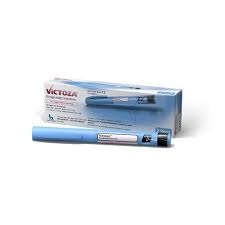Victoza Cost with Other Diabetes Medications
Victoza Cost with Other Diabetes Medications
weight losExplore Victoza Cost with Other Diabetes Medications. In this informative post, we delve into Victoza (semaglutide), a vital treatment for type 2 diabetes known for its benefits, including improved blood sugar regulation and s. Understanding the costs associated with diabetic prescriptions is essential for both patients and caregivers. We compare the price of Victoza with other diabetes medications, highlighting key factors that influence these costs, to empower you in making well-informed decisions regarding your diabetes treatment options. Discover how Victoza stacks up against alternatives like Metformin and other popular medications.

An Overview of Drugs for Diabetes(Victoza Cost with Other Diabetes Medications)
Diabetes treatment frequently entails taking a variety of drug classes, each with distinct modes of action and financial implications. Here is a quick overview of some typical types:
- GLP-1 Receptor Agonists: Victoza is one of these; it lowers blood sugar and stimulates the secretion of insulin.
Metformin: This medication, which is usually used as the first line of treatment for type 2 diabetes, increases sensitivity to insulin.
Sulfonylureas: These drugs encourage the production of more insulin by the pancreas.
- DPP-4 Inhibitors: Usually taken in conjunction with other drugs, they improve the body’s capacity to reduce blood sugar.
- SGLT2 Inhibitors: These further improve renal and cardiac function by encouraging the excretion of glucose through the urine.
Comprehending the expenses linked to these drugs is imperative for proficient control of diabetes managementgs.
Metformin:
- Average Retail Price : Typically, a month’s supply of Metformin costs $4 to $30, making it one of the least expensive diabetes treatments.
- Insurance Coverage: Most insurance plans provide good coverage, which makes it affordable for a large number of patients. Because of its affordability and effectiveness, it is frequently the primary option for managing diabetes.
Sulfonylureas (e.g., Glipizide, Glyburide):
Average Costs: Depending on the particular medication and formulation, sulfonylurea costs can vary from $10 to $100 per month.
Insurance Coverage: Patients should check their plans for exact details on copays, as these medications are typically covered.
DPP-4 Inhibitors (e.g., Sitagliptin, Saxagliptin)
- Cost Comparison: DPP-4 inhibitors typically range from $300 to $600 per month. This variation in price can be attributed to several factors, including the specific medication chosen, the pharmacy dispensing the drug, and the geographic location of the patient. For instance, some pharmacies may offer loyalty programs or discounts that can lower the overall cost.
- Insurance Factors: The coverage for DPP-4 inhibitors can differ significantly among insurance providers. Some plans may fully cover these medications, while others may have higher copays or require prior authorization. Patients should take the time to thoroughly review their insurance benefits, including any formulary tiers that may apply. Understanding these details is crucial, as they can significantly impact out-of-pocket expenses. In some cases, patients may also consider appealing coverage decisions if they believe the medication is medically necessary.
SGLT2 Inhibitors (e.g., Canagliflozin, Dapagliflozin)
- Average Costs: SGLT2 inhibitors generally fall within the price range of $400 to $700 per month. The cost can vary based on the specific medication, the pharmacy chosen, and any available discounts or assistance programs. For example, some pharmacies may participate in discount card programs that can provide significant savings on these medications.
- Considerations for Use: While SGLT2 inhibitors are typically more expensive than other diabetes medications, they offer significant additional benefits that may justify the higher cost. Research has shown that these medications can provide not only effective blood sugar control but also cardiovascular benefits, reducing the risk of heart attack and stroke. Additionally, they have renal protective effects, which can be particularly beneficial for patients with diabetes who are at risk for kidney disease. Patients should engage in discussions with their healthcare providers to evaluate the overall cost-effectiveness of SGLT2 inhibitors. Factors such as existing health conditions, potential side effects, and the long-term impact on health can influence whether the investment in these medications is appropriate. Furthermore, some insurance plans may have specific criteria for coverage based on these additional benefits, making it essential for patients to understand the full scope of their treatment options.
Factors Influencing Cost Differences
- Manufacturer Pricing Strategies:
Pharmaceutical companies set prices based on production costs, research and development investments, and market demand.
- Insurance Coverage Variability
Different insurance plans have unique formularies that can significantly impact the costs patients face at the pharmacy counter. - Pharmacy Pricing Differences
Prices can vary between pharmacies due to competitive pricing strategies, discounts, and local market conditions. - Patient Assistance ProgramsMany manufacturers and non-profits offer assistance programs to help eligible patients manage their medication costs.
- Generic AvailabilityMedications with generic options tend to be more affordable. For example, metformin is available as a generic, while Victoza currently is not.
Other Considerations Beyond Cost
While cost is a crucial factor, it’s essential to consider the overall efficacy and clinical outcomes of each medication. Side effects, patient preferences, and individual health needs should also play a significant role in treatment decisions. Discussing options with healthcare providers can help tailor a treatment plan that balances cost with effectiveness.
